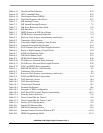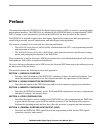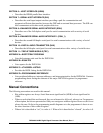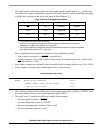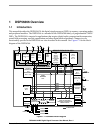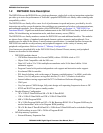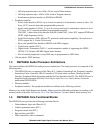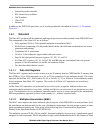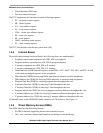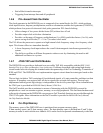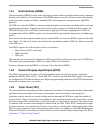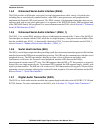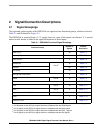
DSP56300 Core Functional Blocks
DSP56366 24-Bit Digital Signal Processor User Manual, Rev. 4
1-4 Freescale Semiconductor
• Instruction cache controller
• PLL-based clock oscillator
• OnCE module
• JTAG TAP
• Memory
In addition, the DSP56366 provides a set of on-chip peripherals, described in Section 1.5, "Peripheral
Overview".
1.4.1 Data ALU
The Data ALU performs all the arithmetic and logical operations on data operands in the DSP56300 core.
The components of the Data ALU are as follows:
• Fully pipelined 24-bit × 24-bit parallel multiplier-accumulator (MAC)
• Bit field unit, comprising a 56-bit parallel barrel shifter (fast shift and normalization; bit stream
generation and parsing)
• Conditional ALU instructions
• 24-bit or 16-bit arithmetic support under software control
• Four 24-bit input general purpose registers: X1, X0, Y1, and Y0
• Six Data ALU registers (A2, A1, A0, B2, B1, and B0) that are concatenated into two general
purpose, 56-bit accumulators (A and B), accumulator shifters
• Two data bus shifter/limiter circuits
1.4.1.1 Data ALU Registers
The Data ALU registers can be read or written over the X memory data bus (XDB) and the Y memory data
bus (YDB) as 24- or 48-bit operands (or as 16- or 32-bit operands in 16-bit arithmetic mode). The source
operands for the Data ALU, which can be 24, 48, or 56 bits (16, 32, or 40 bits in 16-bit arithmetic mode),
always originate from Data ALU registers. The results of all Data ALU operations are stored in an
accumulator.
All the Data ALU operations are performed in two clock cycles in pipeline fashion so that a new
instruction can be initiated in every clock, yielding an effective execution rate of one instruction per clock
cycle. The destination of every arithmetic operation can be used as a source operand for the immediately
following arithmetic operation without a time penalty (i.e., without a pipeline stall).
1.4.1.2 Multiplier-Accumulator (MAC)
The MAC unit comprises the main arithmetic processing unit of the DSP56300 core and performs all of
the calculations on data operands. In the case of arithmetic instructions, the unit accepts as many as three
input operands and outputs one 56-bit result of the following form- Extension:Most Significant
Product:Least Significant Product (EXT:MSP:LSP).
The multiplier executes 24-bit × 24-bit, parallel, fractional multiplies, between two’s-complement signed,
unsigned, or mixed operands. The 48-bit product is right-justified and added to the 56-bit contents of either



